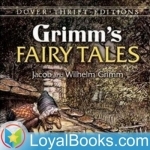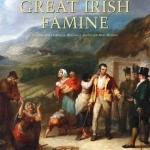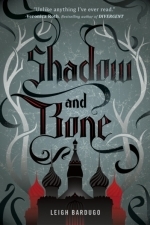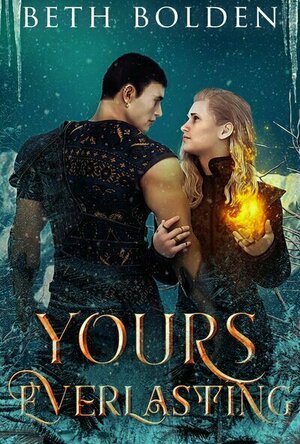
Grimms' Fairy Tales by Jacob & Wilhelm Grimm
Podcast
Talking animals, wicked stepmothers, valiant tailors, cruel witches! Sixty-two stories that feature...

Haypi Adventure: Kingdom of Glory
Games and Entertainment
App
This new strategic war game is based during the Age of Discovery! The game has been well received...

Radio Pro HQ
Music and Entertainment
App
"Radio Pro HQ" is a modern internet radio receiver that enables you to listen lots of internet radio...

Otogi: Spirit Agents
Games, Entertainment and Stickers
App
"Help wanted! Calling everyone with spirit essence! Become a spirit agent today!" Um… I just have...
Becs (244 KP) rated Shadow and Bone (The Grisha #1) in Books
Aug 23, 2019
TRIGGER WARNINGS: violence, manipulation, death, blood, absent of parent(s), emotional abuse, anger issues, anxiety – panic attacks, talk of hallucinations
Review:
Firstly, I did not realize that Shadow and Bone was set in Russia or should I say – based on Russia and spun into a fantasy filled folklore novel. It starts off strong in the prologue and holds that captivating appeal throughout. I was enthralled with the whole basis of the story.
The one thing that knocked half of a star off of this review is the extremely overused trope of “the main character is ordinary and then finds out that they are extraordinary.” In Leigh Bardugo’s doing, this trope works perfectly well with the plot line of this story. But it made me really dislike the main character, Alina, quite a lot. Behind that awful trope, lies a girl who is not only strong, but shows intelligence and loyalty. Alina was also extremely relatable through her sarcastic perceptiveness but there was something else about her that I couldn’t put my finger on and found rather annoying.
The Darkling on the other hand was this morally gray character that fascinated me. For example: how he is willing to be ruthless just to pursue his goal of freeing Ravka from the Shadow Fold. His sarcasm that outwits Alina’s. His good looks and charms. I love to hate him! Plus that one scene had me heated from head to toe. If only The Darkling were real…
Overall, all of the characters were multidimensional and extremely interesting! The pacing of Shadow and Bone was done excruciating well and I was absorbed in this fantastical world of magic and war, love and mystery. Finding out more of who the Grisha truly were, kept me turning page after page. The chemistry between characters was even amazing! There was a bit of a love triangle style of trope, yet it wasn’t quite that exactly. All in all, Leigh did an excellent job with giving Alina more than one love interest but showing how vastly different feelings she feels for each.
The plot was extremely engaging and continued on, even after the climax. It enthralled the reader, calling them with a whisper that is interwoven with a dark energy, seeking to break your heart. I did not notice any spelling and/ or grammatical errors that took away from the story. I do however want to know more of not only Alina’s and Ravkas fate, but The Darklings as well.
Leigh Bardugo, why do you do cruel things to me…
“What is infinite? The universe and the greed of men.”

Radio HQ (lite version)
Music and Entertainment
App
"Radio HQ (lite version)" is a modern internet radio receiver that enables you to listen lots of...

Atlas of the Great Irish Famine
John Crowley, William J. Smyth and Mike Murphy
Book
The Great Famine is possibly the most pivotal event/experience in modern Irish history. Its global...
Kate Nash recommended track Black Is the Colour of My True Love's Hair by Christy Moore in Live in Dublin by Christy Moore in Music (curated)
Debbiereadsbook (1617 KP) rated Yours Everlasting (Enchanted Folklore #2) in Books
Apr 14, 2022
This is book 2 in the Enchanted Folklore series. While it can be read as a stand alone book, to get the full impact of this book, you should read Yours Forever After first. It will give you a better view of Evrard, and just what he means to this world.
As the Guardian of Secrets, he is called Evander. Banished for wanting to keep people safe from power hungry sorcerers, he becomes Rhys, and then Evrard, the King of the Unicorns. Marcos watched from afar for so long, so VERY long but now things have changed and they both need to reveal themselves, and quite possibly save the world from those who were tasked with keeping it safe.
In book one, he is Evrard and then Rhys. Here, we get Evander, as he was in the beginning. And it is very important, that beginning, and it shapes him, for all those years to come.
What I especially loved about this book was the time involved! I mean, Evander has been on the surface for a thousand years, and Marcos has loved for that long, longer in fact. Marcos watched Evander when Evander didn't even see Marcos, from before his banishment. That Evander, as Guardian of Secrets, didn't know that, was surprising!
There is a huge amount of emotion in this book. Evander has been alone for a long time. Gray and Rory helped but Evander is lonely. Marcos is patient, has been a long time wanting Evander, but now things need to move forward, so he makes himself known to Evander.
As things move along, Evander joins the dots, putting it all together, and is surprised by Marcos, many times. Marcos is also surprised when Evander reveals some things he had not noticed after all this time.
There is love, even if Evander doesn't think himself capable of such feeling. Betrayal too, and Evander has to deal with the aftermath of that.
Gray and Rory from book 1 play a huge part, and it was fun to catch up with them and their own surprise at the end.
It's beautifully written, from Evander and Marcos point of view. It takes a long time for everything to come together, including Marcos and Evander, and I love that I had to wait. Because sometimes, you need to be made to wait, and the result is such a sweet, sweet thing.
Are there more? Will there be? I'd love to catch up with Evander, Marcos, Gray and Rory but also, there was clearly something between two other Guardians, and I'd like more on that.
I gave book 1 four stars but I found this a much more engaging read, so beautifully told, a story of everlasting love.
5 full and shiny stars
*same worded review will appear elsewhere
Movie Metropolis (309 KP) rated Krampus (2015) in Movies
Jun 11, 2019
This horror comedy takes the genre to a whole new level, throwing in a nice dose of cheesy festive calamity for good measure. But will you be wishing for it on this year’s Christmas list?
Krampus follows the story of a family, who after getting together for the holiday; forget the spirit of Christmas and what it means to hope for a better future and for the well-being of those around you.
Unfortunately, there aren’t any visits from Santa on the cards for this unlucky group, as their continuous bickering summons Krampus, St. Nicholas’ shadow. Krampus is a popular piece of German folklore, a hooded anthropomorphic figure who punishes naughty children in the run up to Christmas.
Naturally, the legend of Krampus gets an American makeover but surprisingly the end result is one of the best horror comedy films in years with some well-time scares and just the right amount of laughs. The family, known only by their first names, is a well-acted group featuring talent like Toni Collette, Adam Scott and the ever-popular David Koechner.
The family unit has just the right amount of chemistry to make their relationships feel believable with Krista Stadler providing an eerie performance as the film’s eldest character.
What sets Krampus apart from its peers is the ingenious plot and fascinating story, with one particular scene featuring some crazed gingerbread men and demonic toys proving to be the film’s highlight. The constant shifts in tone ensure it never settles into a rut, and unusually for the genre, Krampus manages to steamroll itself to a genuinely pleasing climax that’ll have you talking long after you’ve walked out of the cinema.
There’s also a beautifully animated backstory explaining the origins of our antagonist that just proves how above average this film truly is. Only Harry Potter & the Deathly Hallows: Part 1 managed to do such a tasteful cut to animation and it works fantastically well here too.
The titular character is a menacing figure in a long cloak, with dangling chains and large hooves, and despite his lack of screen time, he makes his presence felt. There’ll be no chance of bickering around the Christmas dinner table if there’s the possibility of Krampus showing up.
If there’s one criticism to be directed towards Krampus, it’s the lack of actual horror. Yes, there are scares but the majority of them are of the jump variety and there’s only so much terror that can be inflicted by maniacal biscuits.
Overall, Krampus is a highly entertaining romp with one of the best endings ever seen in the horror comedy genre. This frighteningly funny festive treat should most definitely be on your must watch list – it’s a delight.
Just remember, he knows when you’ve been bad or good, so be good for goodness sake! Krampus is coming to town.
https://moviemetropolis.net/2015/12/06/full-of-festive-thrills-and-chills-krampus-review/



